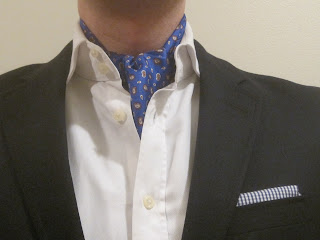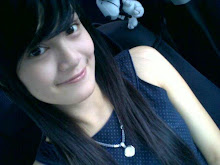Types Of Neck Wear: Neckties, Ascots, Bolo Ties And More
Types Of Neckwear: Neckties, Ascots, Bolo Ties And More


Although the traditional necktie is the preferred neck wear for most men, it is by no means the only neckwear. Ascots can be worn with casual sportswear or with formal day wear. The ascot is part of the formal morning suit which is used for daytime affairs like weddings. Ascots are usually made from silk and are available in many colors. Formal day dress most often uses gray, but may use other hues depending on the wearer and the occasion.
The morning suit originated as a less formal look used by men in the 18th century for riding. More practical and comfortable than frock coats, this look gradually evolved and became that standard for formal day attire during the Edwardian period. The ascot derives its name from the British horse race the Royal Ascot. It is a formal occasion and gentlemen attending usually wear morning coats and ascots.
The bolo or string ties are relatively new to the men's fashion scene, dating back to around the 1930s. The are widely associated with Native American tribes of the southwest US, although versions of this neckwear were also worn by Argentinian gauchos. The bolo or bola tie is usually a cord or narrow braided leather strap fitted through a slide which controls the fit. The ends of the cord are finished with metal tips called aiguilettes. The bolo is worn under the shirt collar and the slides may be made from metal, plastic, stone and even coins. The bolo tie is the official tie of several states in the United States Southwest.

The bandana is informal neck wear usually used in American Western attire. It consists of a scarf, usually patterned and brightly colored, which is folded into a triangle and tied at the back of the neck. The bandana is usually worn over the shirt collar. Bandanas were used by American cattle drivers. They could be pulled up over the mouth and nose to keep out dust and sand kicked up by cattle. Film makers love to use them as masks in films featuring Old West bank robberies.
Bow ties today are most often associated with formal evening wear. They are worn with both black tie (dinner jacket) and white tie (tailed coat) formal suits. The terms black tie and white tie were once quite literal and referred to the color of the bow tie that was appropriate for the occasion. Formal bow ties are now available in a variety of colors and patterns and can be coordinated with the cummerbund that is usually worn at the waist in formal evening attire.
The necktie is the most common accessory in modern men's fashion. Neckties are long, tapering strips of fabric, cut on the bias, folded and sewn. Most neckties have pointed lower edges, although squared off edges have been worn from time to time during the twentieth century. The ties are worn under the shirt collar and knotted over the top button of the shirt. Neck ties are may be made of silk, wool, linen or synthetics. They made be solid colored, striped or patterned. The ends of the tie are worn over one another and hang straight down to cover the buttons of the shirt.
There is more to neckwear than the necktie and gentlemen may choose from several options depending on the occasion. In may areas of the US, bolos are interchangeable with neckties for daytime wear. Ascots may be worn in the bandana style for casual day apparel. They can be worn under or over the shirt collar. Men can make their own fashion statement with the right use of neckwear.


Although the traditional necktie is the preferred neck wear for most men, it is by no means the only neckwear. Ascots can be worn with casual sportswear or with formal day wear. The ascot is part of the formal morning suit which is used for daytime affairs like weddings. Ascots are usually made from silk and are available in many colors. Formal day dress most often uses gray, but may use other hues depending on the wearer and the occasion.
The morning suit originated as a less formal look used by men in the 18th century for riding. More practical and comfortable than frock coats, this look gradually evolved and became that standard for formal day attire during the Edwardian period. The ascot derives its name from the British horse race the Royal Ascot. It is a formal occasion and gentlemen attending usually wear morning coats and ascots.
The bolo or string ties are relatively new to the men's fashion scene, dating back to around the 1930s. The are widely associated with Native American tribes of the southwest US, although versions of this neckwear were also worn by Argentinian gauchos. The bolo or bola tie is usually a cord or narrow braided leather strap fitted through a slide which controls the fit. The ends of the cord are finished with metal tips called aiguilettes. The bolo is worn under the shirt collar and the slides may be made from metal, plastic, stone and even coins. The bolo tie is the official tie of several states in the United States Southwest.

The bandana is informal neck wear usually used in American Western attire. It consists of a scarf, usually patterned and brightly colored, which is folded into a triangle and tied at the back of the neck. The bandana is usually worn over the shirt collar. Bandanas were used by American cattle drivers. They could be pulled up over the mouth and nose to keep out dust and sand kicked up by cattle. Film makers love to use them as masks in films featuring Old West bank robberies.
Bow ties today are most often associated with formal evening wear. They are worn with both black tie (dinner jacket) and white tie (tailed coat) formal suits. The terms black tie and white tie were once quite literal and referred to the color of the bow tie that was appropriate for the occasion. Formal bow ties are now available in a variety of colors and patterns and can be coordinated with the cummerbund that is usually worn at the waist in formal evening attire.
The necktie is the most common accessory in modern men's fashion. Neckties are long, tapering strips of fabric, cut on the bias, folded and sewn. Most neckties have pointed lower edges, although squared off edges have been worn from time to time during the twentieth century. The ties are worn under the shirt collar and knotted over the top button of the shirt. Neck ties are may be made of silk, wool, linen or synthetics. They made be solid colored, striped or patterned. The ends of the tie are worn over one another and hang straight down to cover the buttons of the shirt.
There is more to neckwear than the necktie and gentlemen may choose from several options depending on the occasion. In may areas of the US, bolos are interchangeable with neckties for daytime wear. Ascots may be worn in the bandana style for casual day apparel. They can be worn under or over the shirt collar. Men can make their own fashion statement with the right use of neckwear.
























